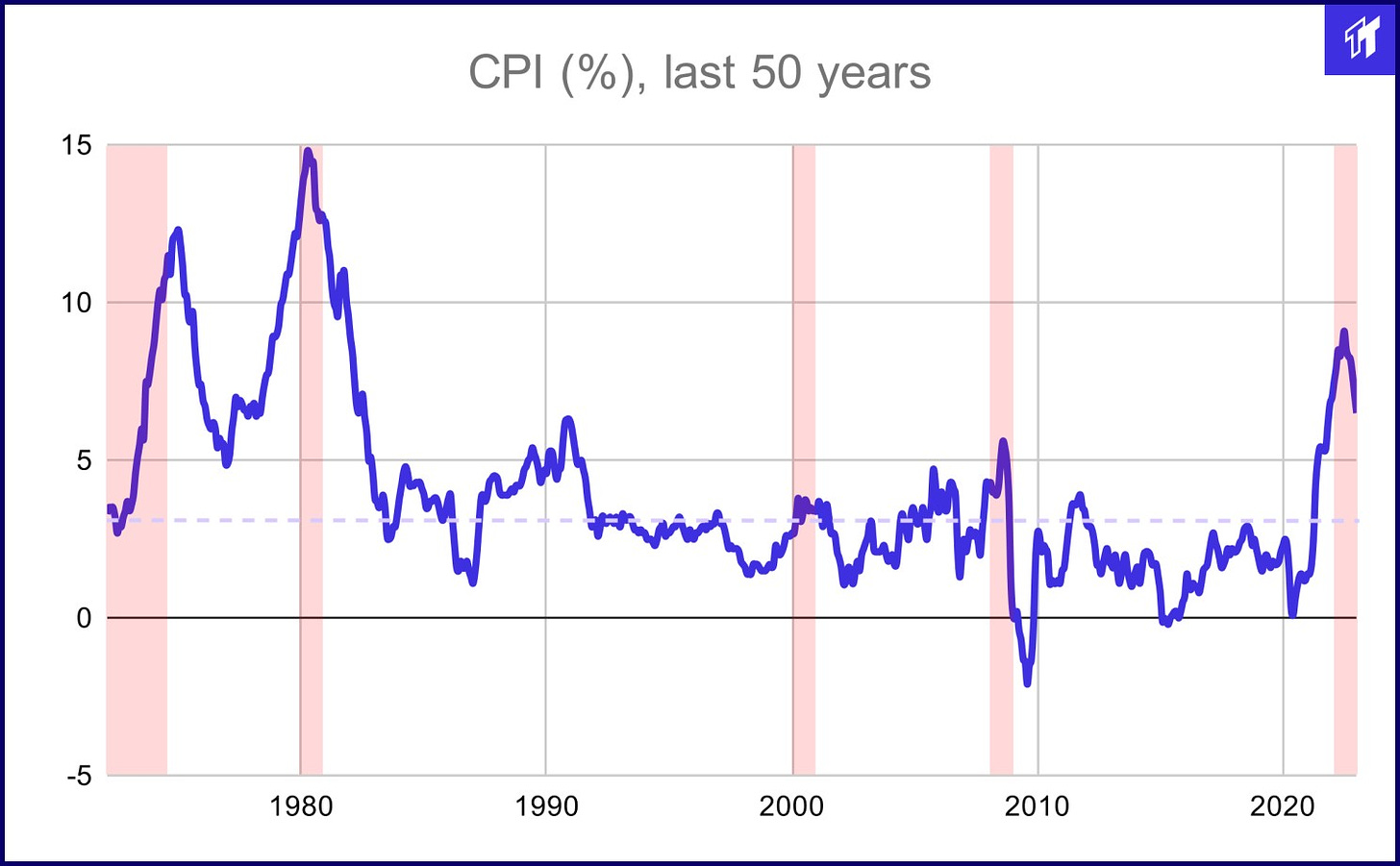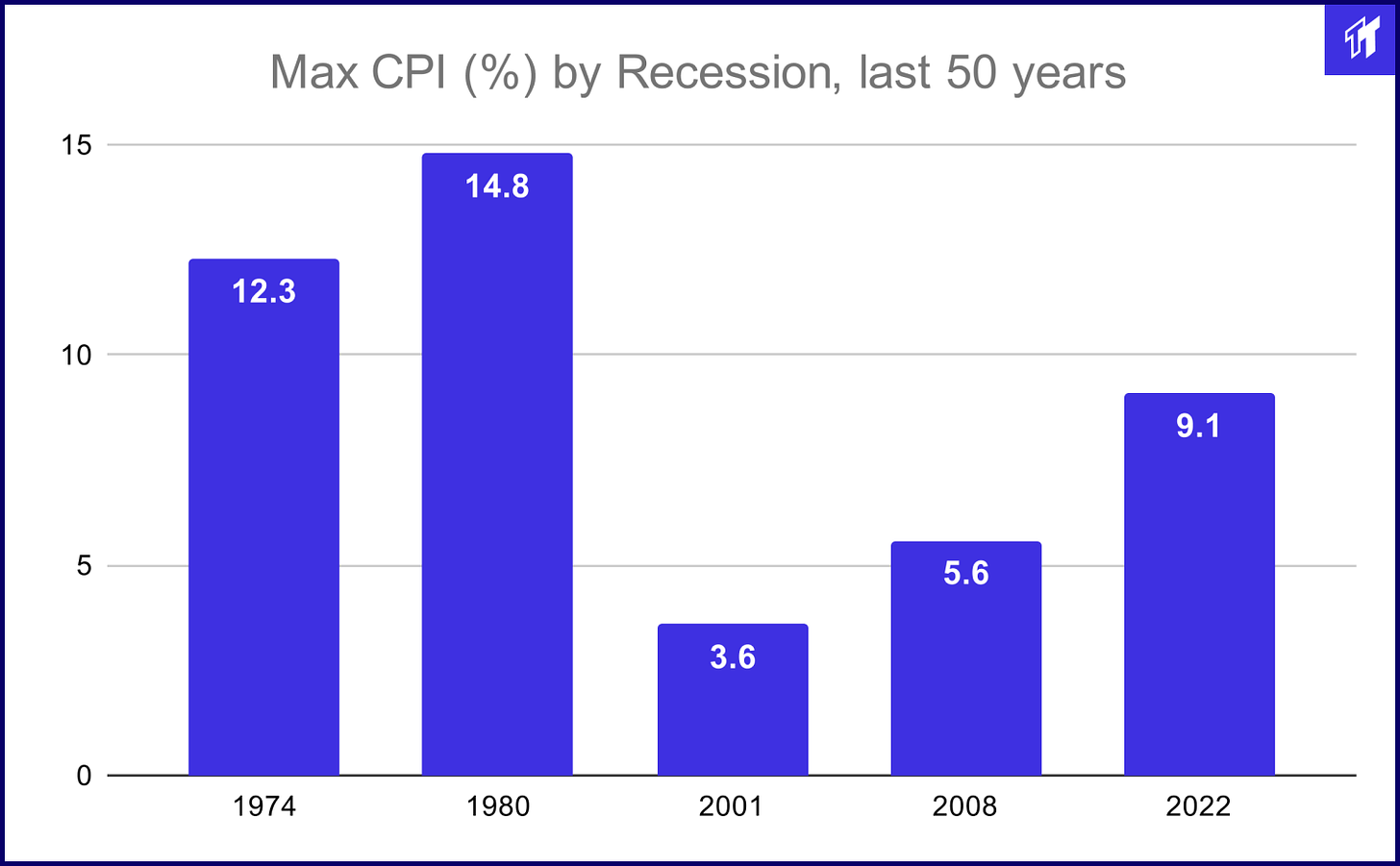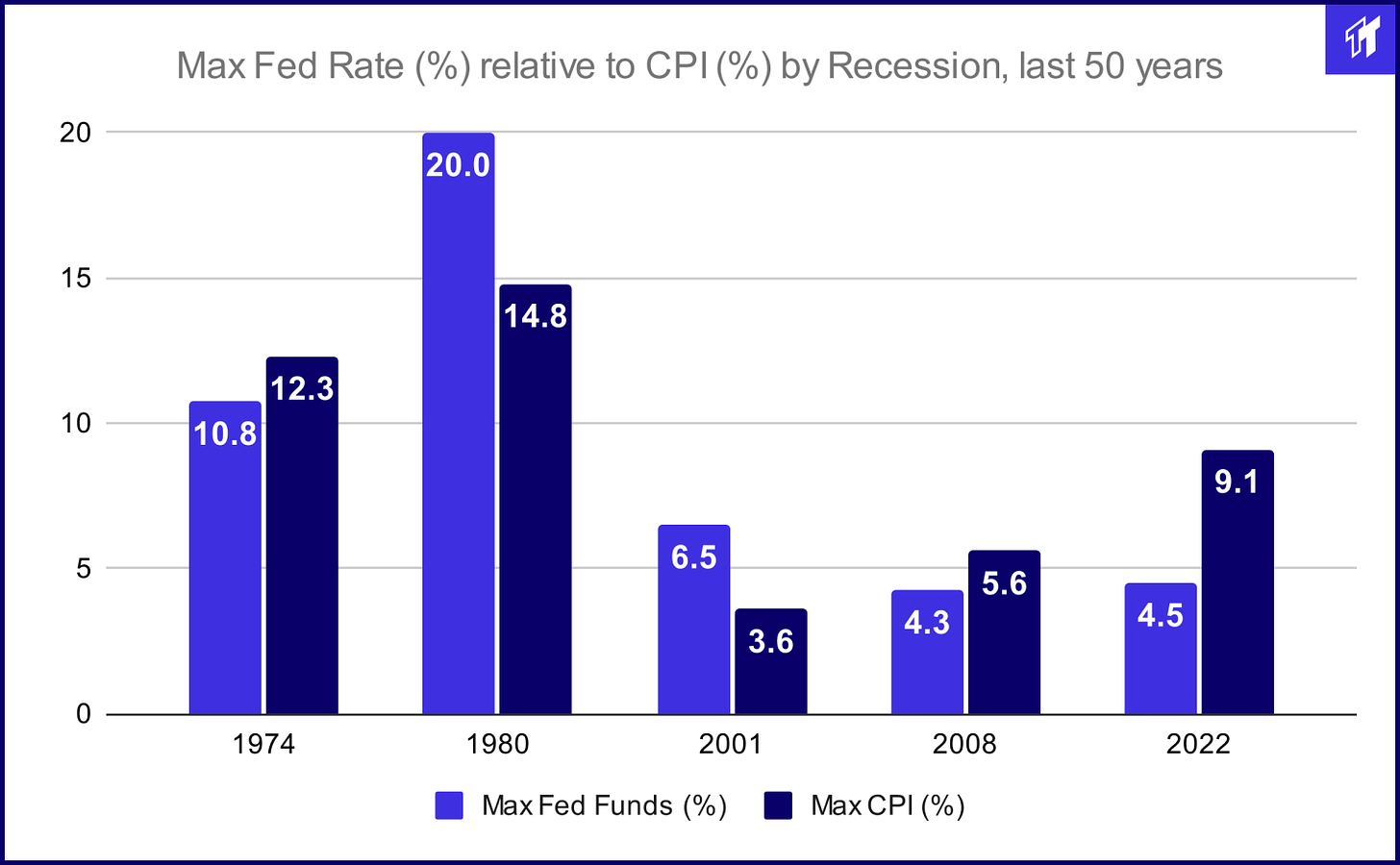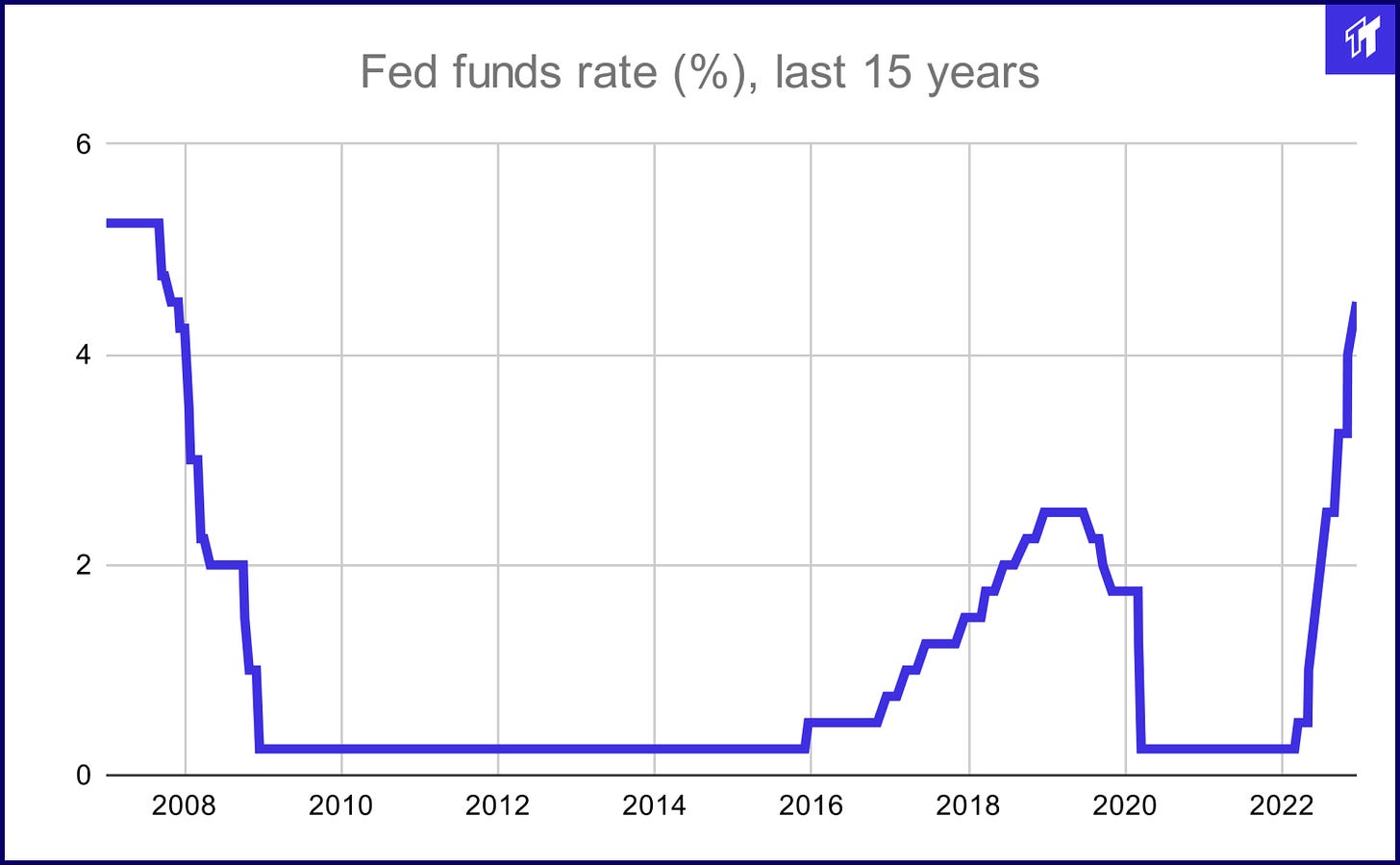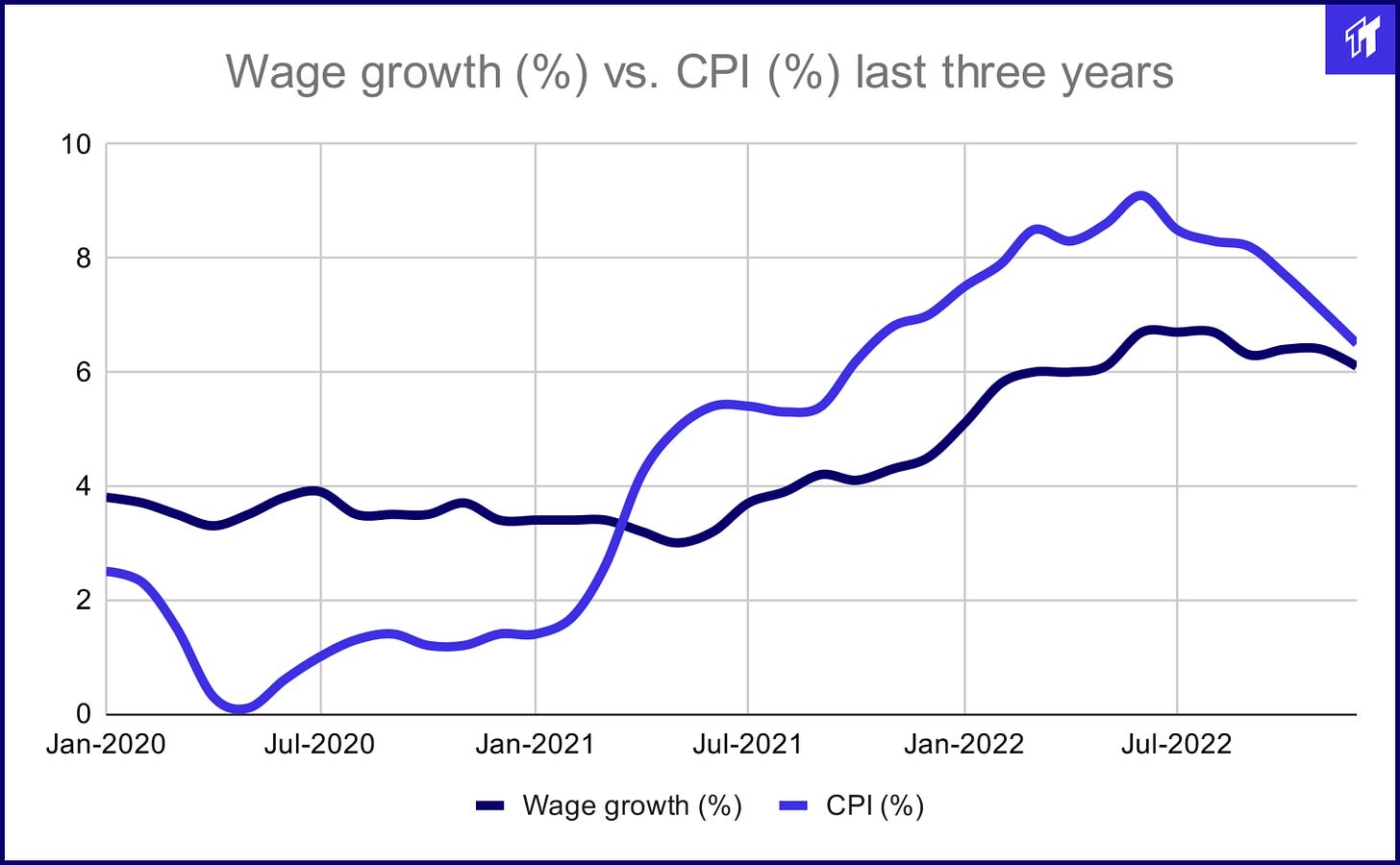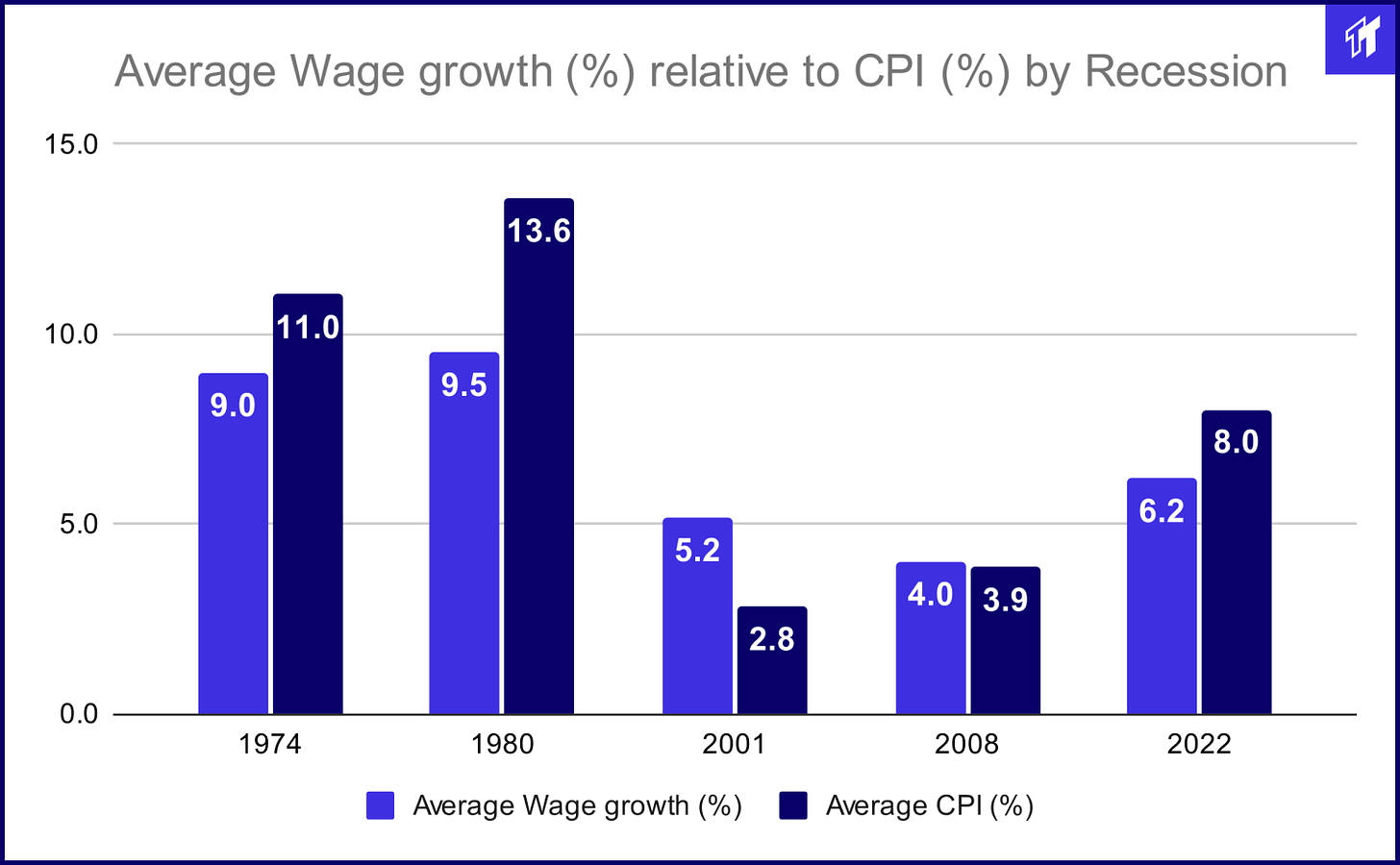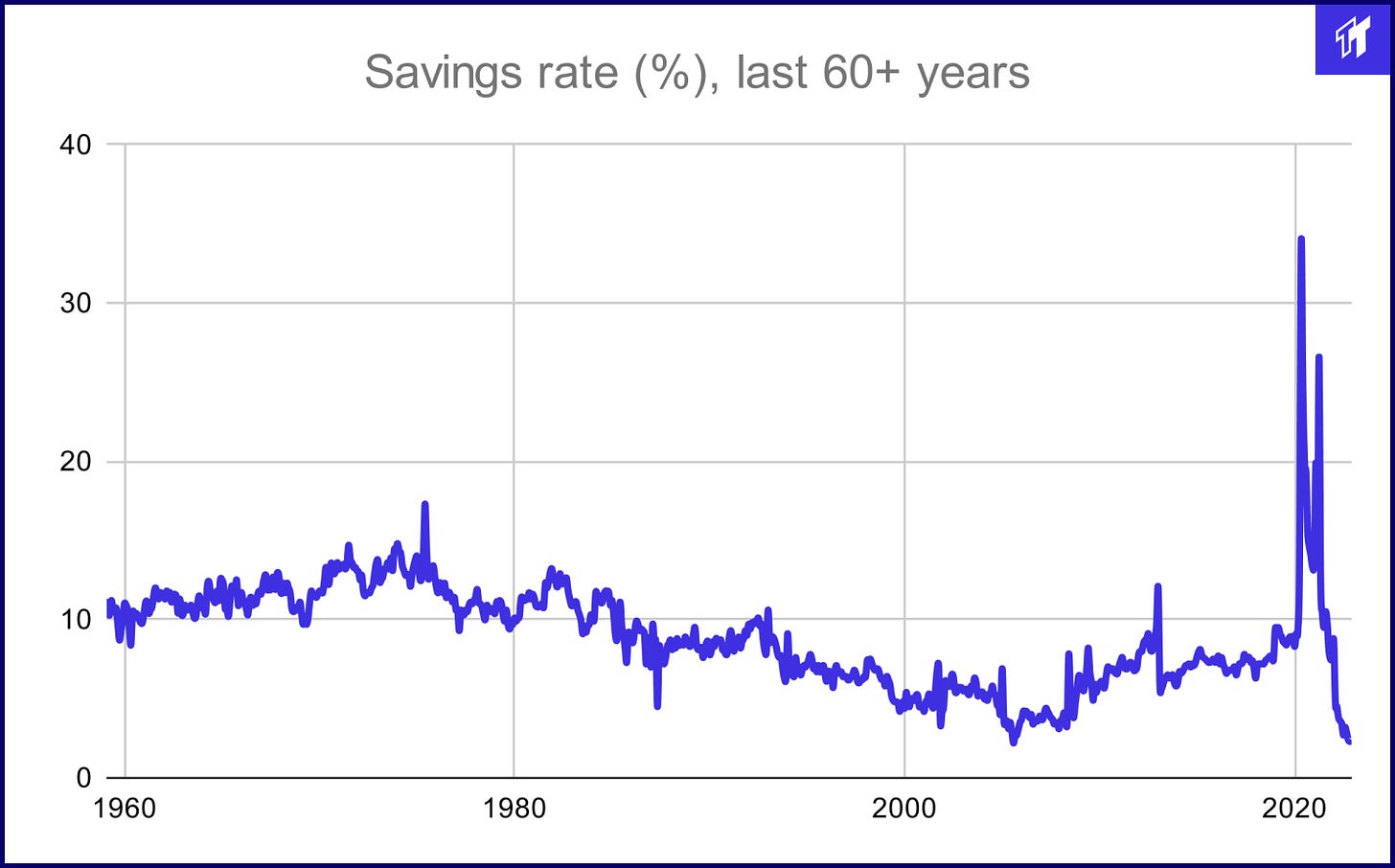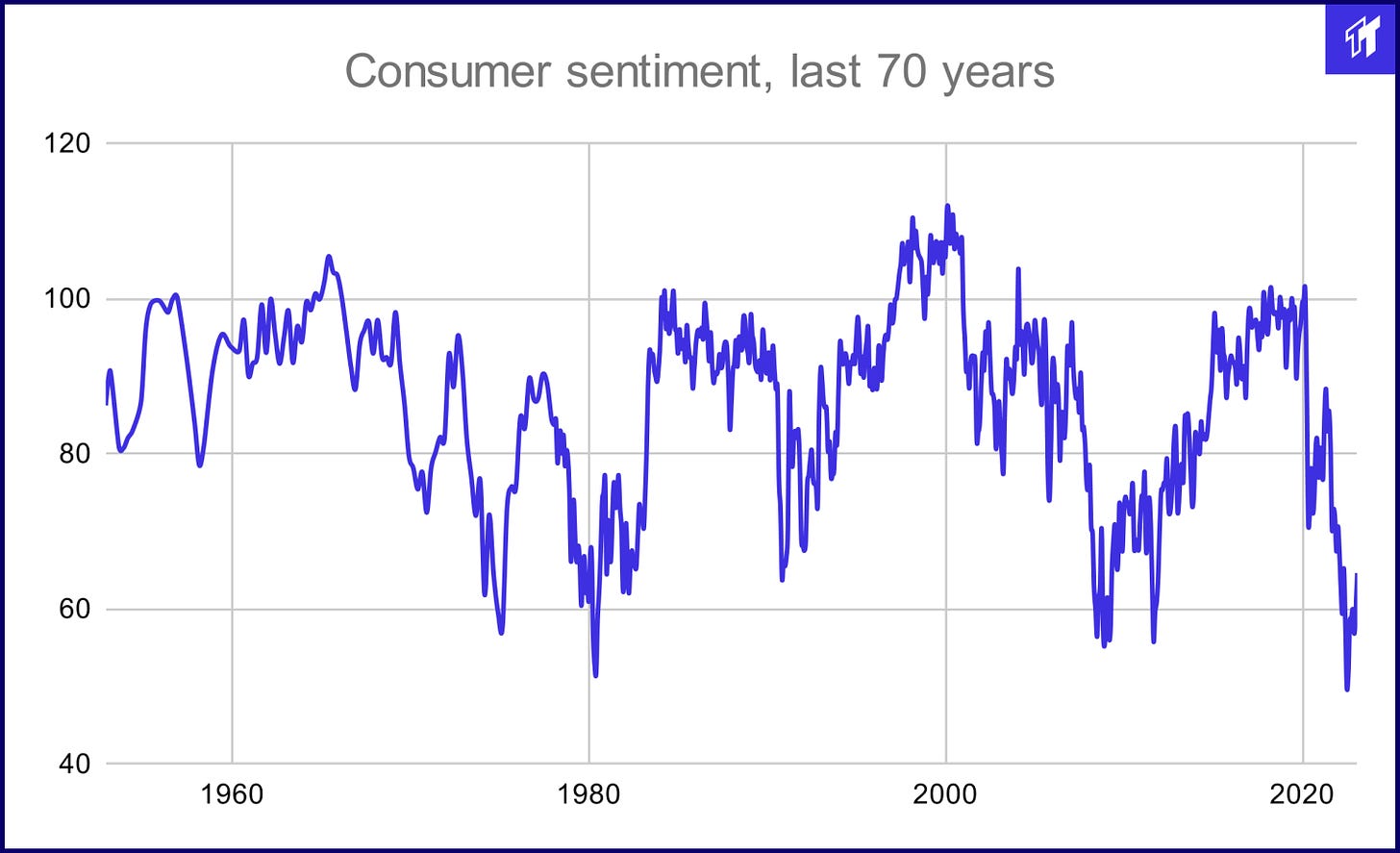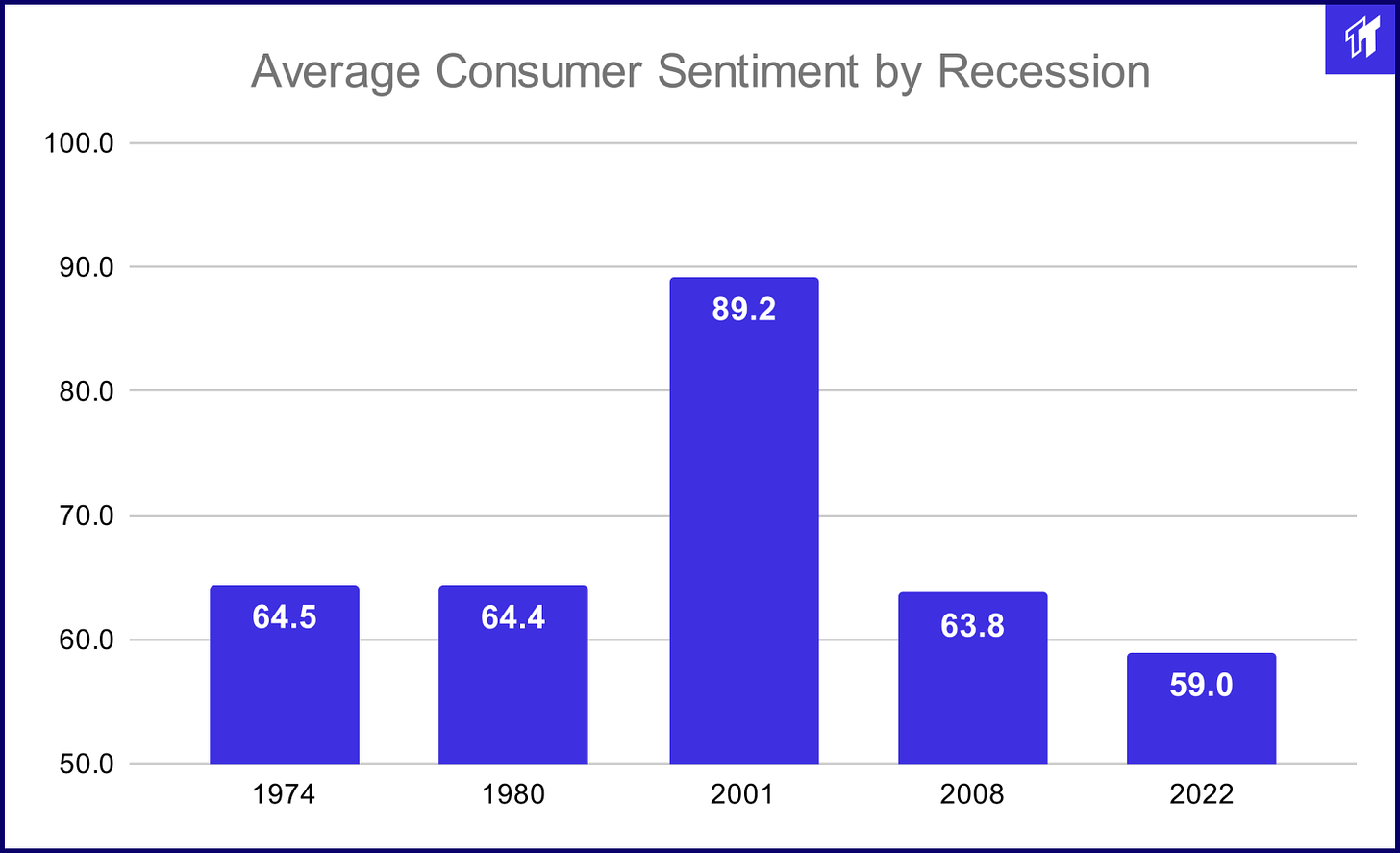Originally published on Twitter and Linkedin on 01/19/2023
The fix is in -- and it looks worse than 2008. Five reasons a recession feels inevitable. Thursday Thread, co-written by Ben Kany ...
Recessions revolve around [a] How much $ consumers feel they have & [b] How much things cost. This is effectively two sides of the same coin. Five indicators that point to a looming recession:
1/ Inflation
2/ Interest rates
3/ Wage growth
4/ Savings rate
5/ Consumer sentiment
#1 Inflation: the rate at which prices for goods & services rise, and subsequently, purchasing power falls. The leading measure is the Consumer Price Index (CPI), which is released monthly.
CPI is far from perfect: it doesn’t capture all production/consumption and doesn’t reflect changes in living standards or good/service quality. But it’s the best metric we’ve got.
Over the past 100 years, it averaged under 3%
In 2022, CPI averaged 8%+
Last year, CPI reached a 40-year high in June: 9.1%
CPI peaked at just 5.6% during the Great Recession 😬
This has many downstream implications, most notably on interest rates…
#2 Interest rates. The Fed rate is the rate at which banks lend money to each other. It’s a powerful tool that influences the economy:
Higher rates slow borrowing & spending to combat inflation.
Lower rates incite borrowing & spending, and inflation.
Last year, in response to inflation, the Fed raised rates at a dramatic pace, with seven hikes to a ~4.5% fed funds rate today. But there's a long way still to go – last time CPI was this high (1981) then-Fed-Chair Paul Volcker raised the rate to 20% (!!)
Volcker oversaw a much stronger US balance sheet, however. Under the current national debt, 10%+ rates are not happening, given the implied debt service.
Nevertheless, rates will continue to rise from an already 15-year high:
#3 Wage growth. As interest rates rise, credit tightens. Accordingly, businesses cut costs: unemployment rises, and wages fall.
Unemployment has been surprisingly resilient (topic for a different Thursday 😉)
Inflation, however, has outpaced wages for two years:
This flippening implies a hard hit on the consumer wallet. And it's more severe than any recession since 1980:
#4 Savings rate: the percentage of disposable income households save. When inflation outstrips wage growth, consumer savings fall, and the economy is vulnerable.
In 2022, savings hit a ~20 year low at 2.3%
This leads to the final and (imo) most important indicator: #5 Consumer sentiment.
Recessions are caused by the collective actions of many – sentiment is foundational.
You feel scared = I feel scared = we feel scared
In '22, the Consumer Sentiment Index, which began in 1952, hit a record low:
Consumer sentiment was nearly ~10% below *prior recessions* in 2022
Summary - five reasons there is going to be a recession:
[1] 40+ year inflation highs; [2] Rising interest rates w/ more hikes ahead; [3] Wage growth < inflation; [4] Thin consumer savings; [5] Rock-bottom consumer sentiment...
How 2022 compares to past recessions by key indicator:
Thanks for reading! For more on macro, my favorite follow is @BobEUnlimited
Follow me & @thursdaythreads for more posts every week
& thanks to Tyler Galpin and this week's co-author, Ben Kany !




